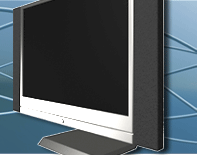Before you begin podcasting develop a plan and a format for your show. Determine the focus of your podcast and what types of guests you would like to interview. Time spent planning your show will contribute to it's success. Location, Location, Location When you are producing a podcast on a regular basis it is important that you select an appropriate location for the recording to take place. The location should be free of external distractions and relatively quiet.
It is easiest if you use the same location each time, that way the equipment can remain in place and will not require moving or setup each time you produce a show. The room should have a carpet or furniture that will absorb echoes and dampen the sound. The room should also have a door, so that you will not have unexpected interruptions. Reduce extraneous noise by turning off fans or any equipment. Consider hanging a note on the door, so that you will not be disturbed while recording.
Recording Away from Home When taking your podcast on the road it is equally important that the quality of the podcast is not compromised for the sake of portability. Consider using a directional microphone or finding a quiet alcove for interviews when on the road. Equipment Make every effort to minimize background noise, at the very least use software that will allow you to edit out extraneous noises that occur while recording.
While Recording Before you begin recording sample different volumes and microphone distances and determine what levels result in the best recordings. To save time, do a test recording and listen to it prior to every show, this will help you catch anything that was inadvertedly unplugged. Spending a little more money on your microphone goes a long way.
Permissions and Contracts The legalities surrounding audio recording are a bit muddled. Regardless of what the legalities are in your region, it is best that you request permission prior to recording anyone! When requesting an interview with a specific individual, be sure to tell them the topic of the show and give them an idea what types of questions to expect. Let them know how long the interview is planned for and the format of the show. Let prospective interviews know whether the broadcast will be edited or will the interview be broadcast live. It is always a good idea to provide interviewees a link to previous interviews. If the interviewee will require any specific equipment or software, provide them ample notice and do a test run to ensure that everything is working properly.
Interviews A little preparation goes a long way; if you have an interview scheduled, be sure to adequately prepare. Make sure that you can accurately pronounce the interviewers proper name, and ask them prior to the interview how they would like to be addressed. Research the interviewee and come up with a list of questions. In some cases it might be appropriate to provide the interviewee the list of questions prior to the interview, this will not only help them prepare but help them relax and prepare for their on-air debut.
If you prefer not to tip your hand in providing the questions prior to the interview, then be sure that you have an idea of what their reaction and responses will be. Follow up questions should based on the interviewee's reactions to your queries. While broadcasting, use your research notes as talking points to direct the conversation. When you guest is talking let them explain their point of view; don't interrupt them unless there is a point to clarify. Biographies of show guests should be included in the show notes or on the shows websites. Request the interviewee send a photo to be included along with the biography.
After the show is published be sure to thank the interviewee and provide them a link to the finished interview along with instructions on how they can listen to the show. Have Fun Use voice inflections to add emotion and passion to your comments and questions. Use music between segments not only does theme music create a brand and audio identity, it also helps transition one segment to another. Intro and outros can soften a podcast and give it a little extra polish. Introduce your podcast at the beginning and end of the show.
Remind listeners who and what they are listening too. This is your opportunity to establish your audio brand. And finally have fun, listeners will be able to tell if your podcast is a labor of love or a painful rendition, keep your spirits up and your mood light!.
Sharon Housley manages marketing for FeedForAll http://www.feedforall.com software for creating, editing, publishing RSS feeds and podcasts. In addition Sharon manages marketing for RecordForAll http://www.recordforall.com audio recording and editing software.







